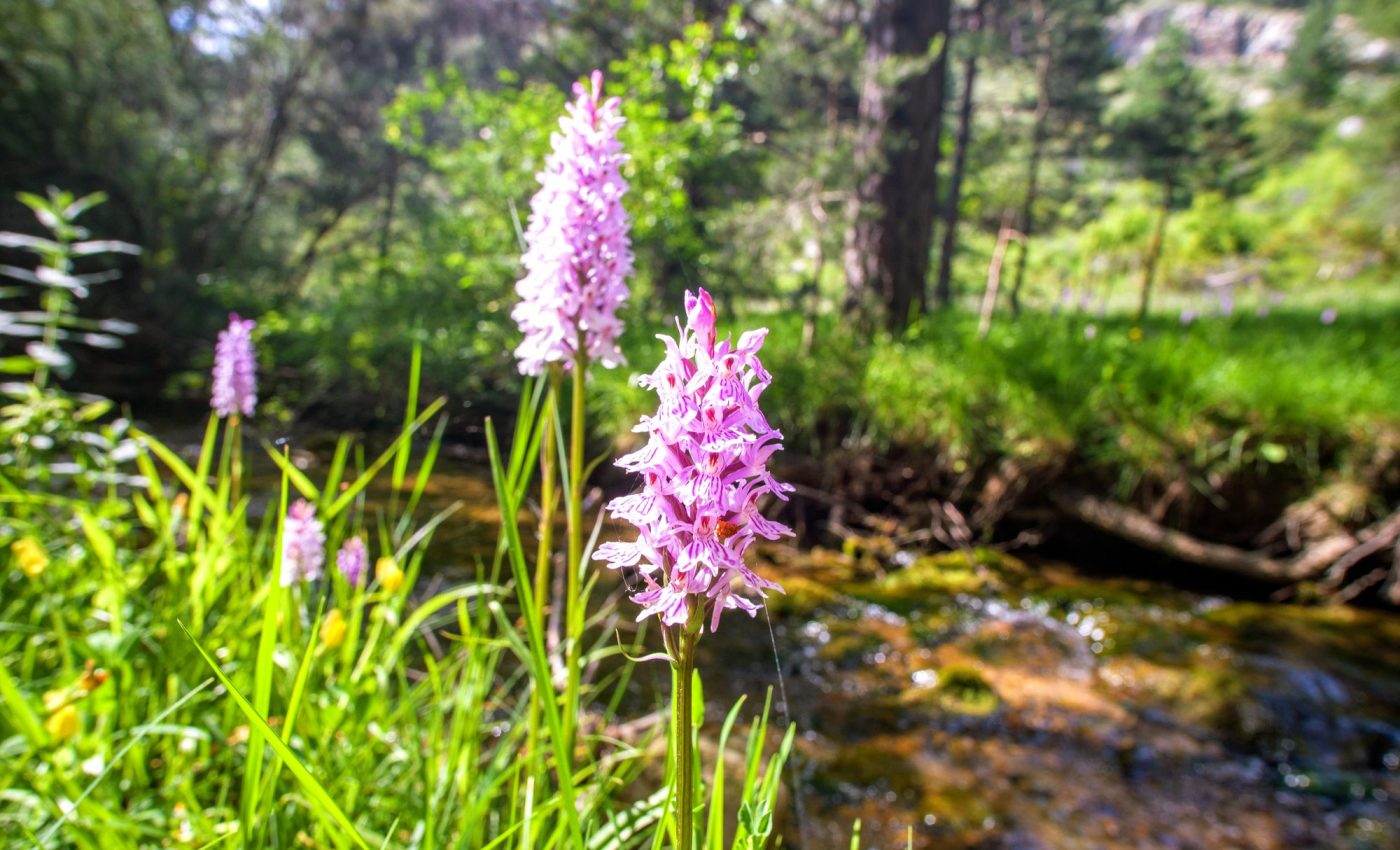
Orchid parents nurture seedlings through fungal networks
The common spotted orchid (Dactylorhiza fuchsii) is prevalent across the UK, yet its clustering pattern, with seedlings often found near mature plants, has puzzled ecologists since Darwin’s era.
A new study led by the University of Sheffield, in collaboration with the University of Manchester, has found that underground fungal networks facilitate this clustering by enabling a form of parental nurture.
Focus of the study
“The Orchidaceae is a diverse, globally distributed plant family, representatives of which are found in nearly all terrestrial ecosystems. As such, it is important to better understand the mechanisms that regulate the structure of its populations,” wrote the study authors.
“Such knowledge is critical both from the perspective of understanding orchid ecology, but also to aid efforts to conserve these iconic plants.”
Mycorrhizal networks
The researchers investigated how fungal networks, known as mycorrhizal networks, serve as pathways for mature orchids to share sugars with seedlings.
Mycorrhizal networks refer to the symbiotic associations between fungi and plant roots, crucial for both parties involved. In this relationship, the fungi enhance plant nutrient uptake (especially phosphorus and nitrogen) in exchange for carbon derived from the plants.
These networks can connect multiple plants, even of different species, allowing them to exchange nutrients, water, and chemical signals, effectively facilitating communication and resource sharing within an ecosystem.
Parent orchids nurture seedlings
“Our results support the idea that some orchids engage in a form of ‘parental nurture’ with their seedlings,” said senior author Katie Field, a biologist at Sheffield.
“By supplying early stage seedlings with essential nutrients via shared fungal connections, the parent orchids give the seedlings an advantage over neighboring plants that are competing for the same resources.”
“This finding is exciting because why these orchids are often found in clumps, despite their seeds being wind dispersed, has been a puzzle for hundreds of years.”
Connecting mature orchids and seedlings
The experts examined the interaction between the common spotted orchid and its fungal partner, Ceratobasidium cornigerum.
The researchers created a system connecting mature, photosynthesizing orchids with developing, chlorophyll-free seedlings through a fungal network grown on agar. They exposed the mature plants to a traceable form of carbon dioxide, then monitored its movement.
Mature orchids and symbiotic fungi
The results showed that the seedlings accumulated the labeled carbon, proving that parent orchids shared sugars with them via the fungal network.
“What is now revealed is that the belowground development of these essentially reserve-free seeds can be supported by photosynthetically produced sugars that are transported to them from mature plants growing above ground through a shared mycelium of symbiotic fungi,” explained lead author David Read, a biologist at the same university.
The experts also found that carbon transfer depends on environmental conditions. When the fungus had access to richer food sources, less carbon was transferred to seedlings, suggesting that the demand from seedlings influences nutrient flow.
Broader implications of the study
This study, published in the journal New Phytologist, has significant implications for orchid conservation and ecology, emphasizing the role of fungal connections in supporting orchid populations.
Future research aims to explore these findings in natural habitats and investigate whether similar mechanisms apply to other orchid species.
Common spotted orchid
The common spotted orchid is a widespread species of orchid native to Europe and parts of Asia. It’s named for the distinctive spotted patterns found on its leaves, which serve as an attractive feature beneath the flower spikes.
This orchid blooms between June and August, showcasing flowers that range in color from pink to purple, often adorned with darker, symmetrical markings that enhance their appeal.
These orchids typically thrive in a variety of habitats, including woodlands, meadows, and marshes, showing a particular fondness for calcareous soils that are moist but well-drained.
As a hardy terrestrial plant, the common spotted orchid has a robust nature that allows it to adapt to different environments, although it faces threats from habitat loss and over-collection in some areas.
The common spotted orchid is not only admired for its beauty but also plays a role in its ecosystem, supporting various pollinators including bees, butterflies, and other insects. Its presence in a habitat can indicate a healthy ecosystem, making it an important species for biodiversity.
—–
Like what you read? Subscribe to our newsletter for engaging articles, exclusive content, and the latest updates.
Check us out on EarthSnap, a free app brought to you by Eric Ralls and Earth.com.
—–













